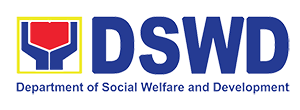The recent second round of household assessment for Listahanan or the National Household Targeitng System for Poverty Reduction (NHTS-PR) of the Department of Social Welfare and Development (DSWD) showed that a total 1,511,320 beneficiaries of the Pantawid Pamilyang Pilipino Program have improved their status to “non-poor”.
This figure represents a large percentage (36%) of the total 4.2 million active Pantawid Pamilya beneficiaries.
“The improvement in the lives of these 1.5 million Pantawid Pamilya beneficiaries is due to their dedication and hard work to break from the intergenerational cycle of poverty that they have been in,” Secretary Corazon Juliano-Soliman shared.
Of those who have transitioned to non-poor, about 67,968 or 4.5% are still at risk of reverting to poverty when faced with disasters and economics shocks.
Studies classify this group as the “vulnerable” or “transient poor”. These are households who registered as non-poor at a particular year but are dragged back to poverty a few years after.
“Given the number of natural disasters that hit the country in recent years, the DSWD recognizes the need to extend assistance to these families to keep them from becoming poor again,” explained Sec. Soliman.
Using the mentioned studies, the DSWD pegged 1.1 or 10% above the poverty line as the threshold that will enable them to identify the vulnerable families in the assessment. By applying the said threshold to the result of the Proxy Means Test (PMT), the Listahanan will be able to generate a list of vulnerable families.
Then, the Department can craft programs that specifically address the needs of this sector.
The PMT is a statistical model that approximates household incomes based on specific household characteristics such as education attainment, livelihood or occupation of household members, and appliances, furniture and other household assets, among others.
Of the 15.1 million households or 16.7 million families covered in the 2nd assessment, the Listahanan identified 880,978 households or 983,816 families as vulnerable.
The DSWD encourages other agencies and organizations involved in social protection to allot a portion of their resources to implement programs that will help vulnerable households attain the level of self-sufficiency.
The complete profile of the vulnerable poor, which includes breakdown per sector, geographic location and employment or occupation, among others, is available upon request.
However, the list of households, families or individuals can only be obtained upon execution of a data sharing agreement with the DSWD. This is to ensure that the list will only be used for implementation of programs and services meant to improve their well-being.
“While the Listahanan can generate statistics on poverty, it does not provide the official poverty statistics,” stated DSWD Secretary Corazon Juliano-Soliman.
The official poverty statistics released by the Philippine Statistics Authority (PSA) provides data on poverty and subsistence incidences based on poverty and food thresholds.
The Listahanan is an administrative tool for targeting poor families. It establishes a centralized database of poor families to serve as basis for identifying beneficiaries of social protection programs and services, minimizing wastage of resources to unintended recipients. ###


